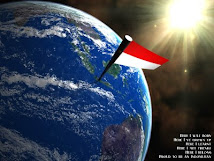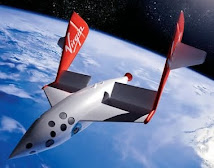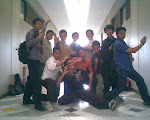President Barack Obama toured a research laboratory at the Massachusetts
Institute of Technology (MIT), where he took a tour of some of the
cutting edge clean energy technology that has been in development by
researchers there.
At the solar station, Professor Marc Baldo was to show Obama luminescent solar concentrators that collect sunlight for solar cells.
At the wind station, Professor Alex Slocum was to demonstrate an Offshore Renewable Energy Systems (ORES), for which excess power from a wind turbine pumps water out of a storage volume anchored to the seabed.
Professors Angela Belcher and Paula Hammond at the battery station were to display a high-power "clean" battery that can be made using biological processes, without toxic materials, and without adding harmful materials to the environment.
Professor Vladimir Bulovic was to demonstrate quantum dot lighting a possible replacement for light bulbs or fluorescent lights that combines warm, rich color with efficient LED technology.
Beberapa Alamat Lab Energi MIT
- MIT Energy Initiative
- MIT Energy Initiative Video Collections
- MIT Energy Studies Minor
- MIT Energy Studies Minor Video Collections
- MIT Center for Energy and Environmental Policy Research
- MIT Energy Club
- MIT Energy Night
- MIT Clean Energy Prize
- MIT Technology Review on Energy
- MIT Energy Finance Forum
- MIT Energy Conference
Kurikulum Pendidikan Teknik Energi Bersih
Kurikulum yang dirancang meliputi 20% teori berupa perkuliahan dikelas serta 80% kegiatan praktek di bengkel maupun labotorium di lingkungan sekitar.
Adapun matakuliah-matakuliah keahlian yang ditawarkan di antaranya:
• Prinsip-prinsip Mesin Konversi Energi
• Termodinamik Teknik
• Prinsip prinsip Perpindahan kalor dan Heat Exchanger
• Mekanik Fluida
• Mekanik Teknik
• Elemen Mesin
• Sistem Pembangkitan Listrik (PLTA,PLTU,dan PLTD)
• Instalasi Kelistrikan
• Instrumentasi dan Sistem Kontrol
• Menggambar Teknik berbasis CAD
• Proses Manufaktur
• Rancangan Prabrik Dan sistem Tata Letak
• Perancang Alat dan Mesin
• Motor Bakar
• Pompa dan Kompresor
• Sistem Turbin
• Rekayasa Energi Terbarukan
• Konversi Energi Biomassa dan Biogas
• Teknologi Angin,Surya dan Mikrohidro
• Teknologi Bio Proses
• Sistem Refrigerasi dan Pengkondisian Udara
• Teknologi Proses Bahan Bakar Nabati
• Audit Dan Manajeman Energi
Penelitian dan pengabdian Masyarakat
Beberapa kegiatan penelitian dan pengabdian masyarakat yang telah dan sedang dilakukan dalam bidang energi antara lain :
• Rancangan Bangun alat Pengepres Biji Jarak Sebagai Bahan Bakar Alternatif
• Kajian Mesin Pendingin Absorpsi Intermitten Menggunakan Fluida Kerja Ammonia-Air.
• Kajian Mesin Pendingin Adsorpsi Menggunakan Fluida Kerja Silica-Metanol.
• Rancangan Bangun Kiln Metal Sebagai Bahan Baku Asap Cair Untuk Pengasapan Ikan
• Rancangan Bangun Dan Sistem Kontrol Pemanas Air Menggunakan Kolektor Surya Plat Datar.
• Penerapan Distilator Surya Atap Kaca (DSAK) Untuk Pengolahan Air Laut Menjadi Air Bersih.
• Kajian Desa Mandiri Energi di Setiap Daerah
• Studi Kelayakan Pembangunan Pembangkit Listrik Tenaga Mikrohidro (PLTMH) Di Daerah-daerah
• Pembangunan PLTMH di dusun dan suatu kampung
• Pembangunan PLTMH di dusun dan suatu kampung
• Kajian Penerapan Rekayasa energi Terbarukan Untuk Mendukung Implementasi Pembangunan Desa Mandiri Energi di setiap wilayah.
Ucapan Terima Kasih:
Kak Rezy Pradipta, M.Sc., Ph.D.
[Alumni Team Olimpiade Fisika Indonesia dan Peneliti Iptek Nuklir di MIT]
Semoga Bermanfaat.
Ucapan Terima Kasih:
Kak Rezy Pradipta, M.Sc., Ph.D.
[Alumni Team Olimpiade Fisika Indonesia dan Peneliti Iptek Nuklir di MIT]
Semoga Bermanfaat.
























